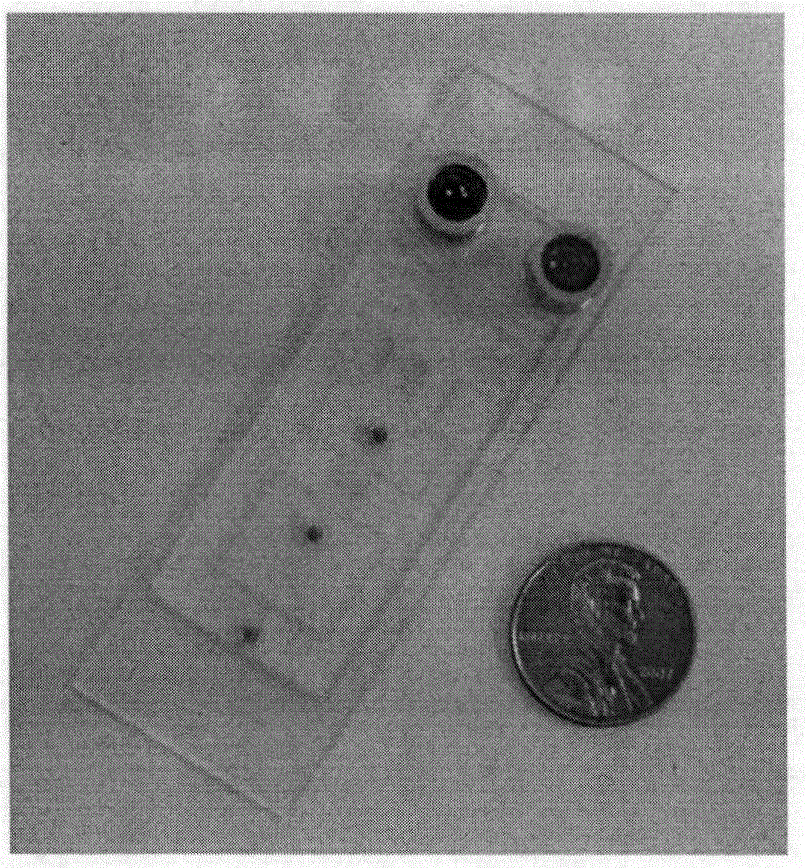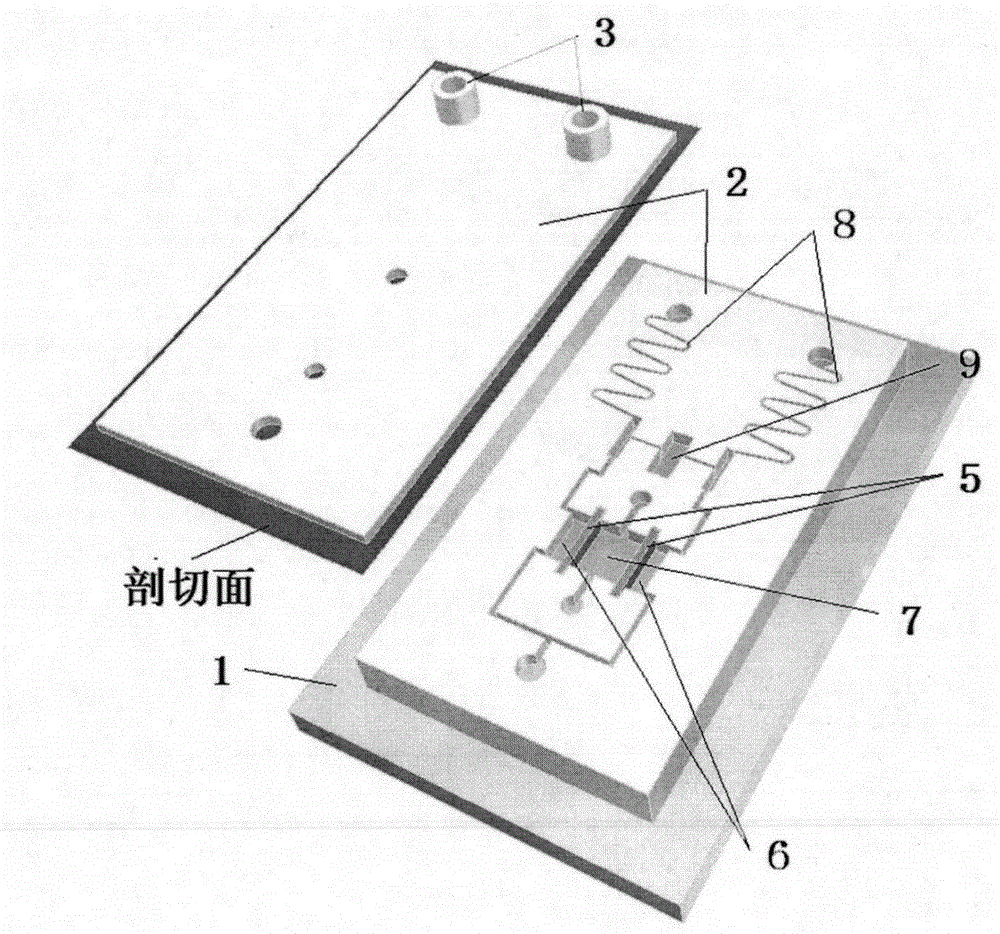A micro-nanofluidic device for cell migration research
A micro-nanofluidic and cell migration technology, applied in the field of microfluidics, can solve the problems of unable to provide chemical concentration gradient, unable to support extracellular matrix, maintain concentration gradient, etc., to achieve compact structure, simple detection and research, and simple operation.
- Summary
- Abstract
- Description
- Claims
- Application Information
AI Technical Summary
Problems solved by technology
Method used
Image
Examples
Embodiment Construction
[0012] In order to form the microstructure of the hydrogel on the surface of the glass substrate, the surface was treated to improve the adhesion of the hydrogel. Briefly, the surface is treated with organosilanes to generate tethered methacrylate groups to be covalently bonded to the hydrogel during polymerization. The substrate is first immersed in a "piranha" solution of 30% w / v hydrogen peroxide and concentrated sulfuric acid in a ratio of 1:4 to clean and hydroxylate the surface of the substrate. The hydroxylated surface was soaked in 3-(trichlorosilyl)propyl methacrylate (TPM, Sigma-Aldrich, St.Louis, MO) at a concentration of 1 mM in a heptane / carbon tetrachloride ratio. 80% / 20% (V / V) mixed solution for 5 minutes, so that a dense Si-O-Si bond network surface structure and pendant methacrylate can be formed on the surface of the substrate.
[0013] The microfluidic chamber is fabricated using MEMS technology. It mainly includes SU-8 mold process and PDMS molding proces...
PUM
 Login to View More
Login to View More Abstract
Description
Claims
Application Information
 Login to View More
Login to View More - R&D
- Intellectual Property
- Life Sciences
- Materials
- Tech Scout
- Unparalleled Data Quality
- Higher Quality Content
- 60% Fewer Hallucinations
Browse by: Latest US Patents, China's latest patents, Technical Efficacy Thesaurus, Application Domain, Technology Topic, Popular Technical Reports.
© 2025 PatSnap. All rights reserved.Legal|Privacy policy|Modern Slavery Act Transparency Statement|Sitemap|About US| Contact US: help@patsnap.com



